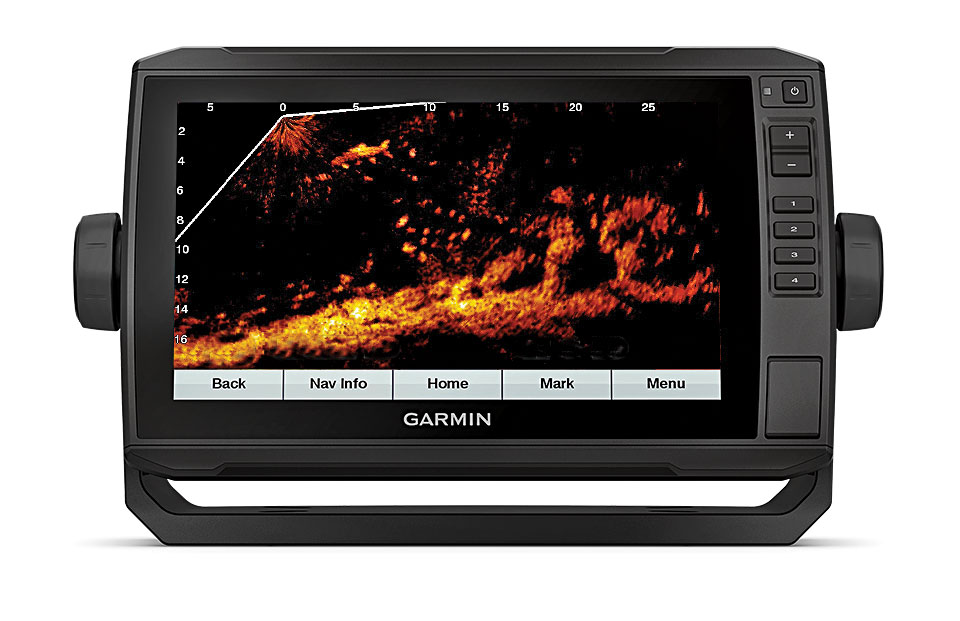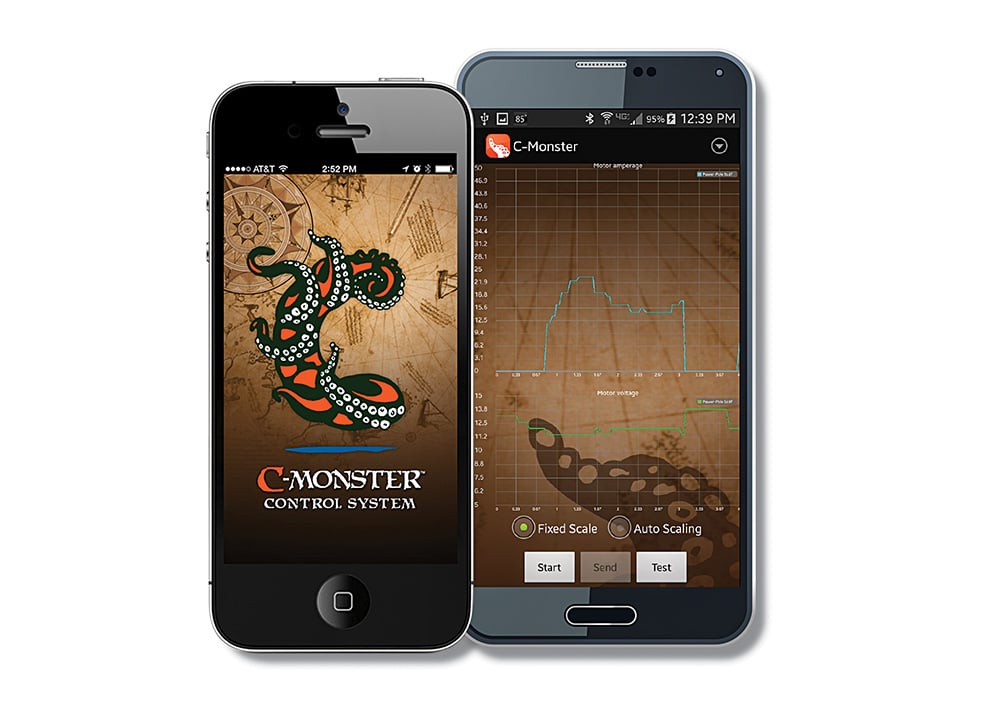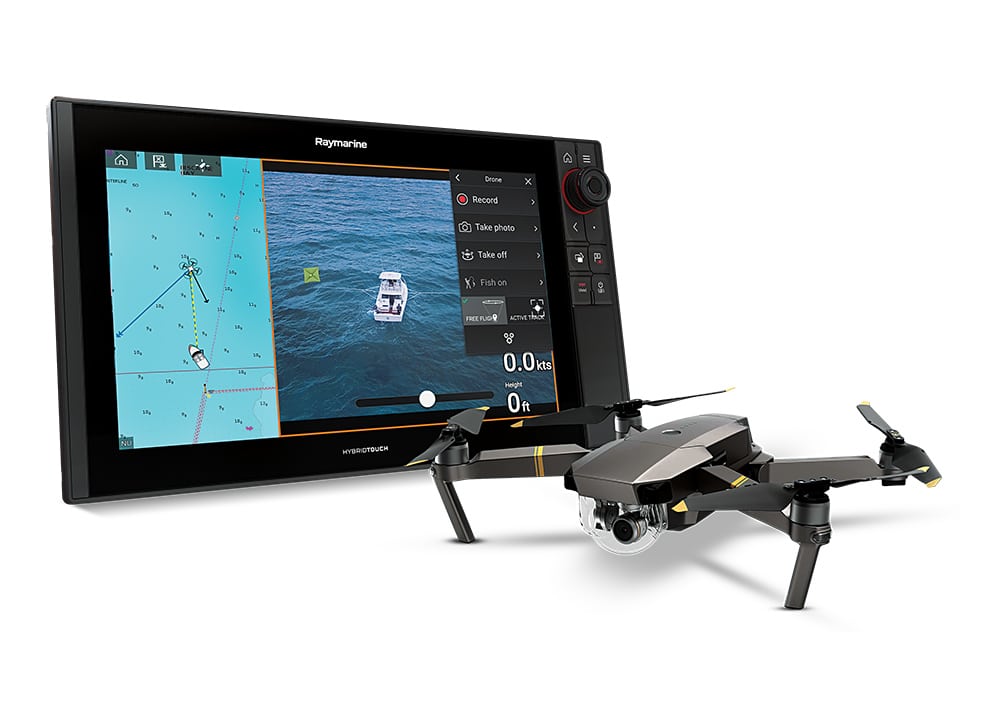
From the moment I learned about small, remotely operated drones, I imagined how these unmanned aerial vehicles (UAVs) might help me catch more fish.
I dreamed about aerial scouting for weed lines, rips, and flocks of feeding seabirds. I envisioned spotting fish such as cobia, mahi, redfish and tuna. I even thought about dropping baits from above to fish that were well beyond casting distance.
I’m not alone. The same thoughts have struck many anglers. Now pioneering fishermen are converting their drone-fishing dreams into reality.
In many respects, the technology had to catch up with the vision. When the flying pieces of electronics first appeared about eight years ago, they proved difficult to operate, and many were quickly crashed by novice pilots.
However, today’s UAVs offer a host of features that make them easier to use. One of the most important is built-in GPS that allows the drone to automatically hover in place, fly predetermined patterns, and return to the takeoff point. Drones still require experienced and focused operators, but advancing technology is easing the task.
From a fishing point of view, development of waterproof drones played a pivotal role. There are now a number of waterproof drones, including the Goolsky Q353 Triphibian ($104), Ideafly Poseidon-480 ($800) and the QuadH2O ($850).
Yet arguably the most advanced and practical UAV for anglers is the SplashDrone 3 Fishing Edition from SwellPro ($1,958 with a camera and payload release).
Fishing with drones is still in its infancy, but here are some of the current uses.
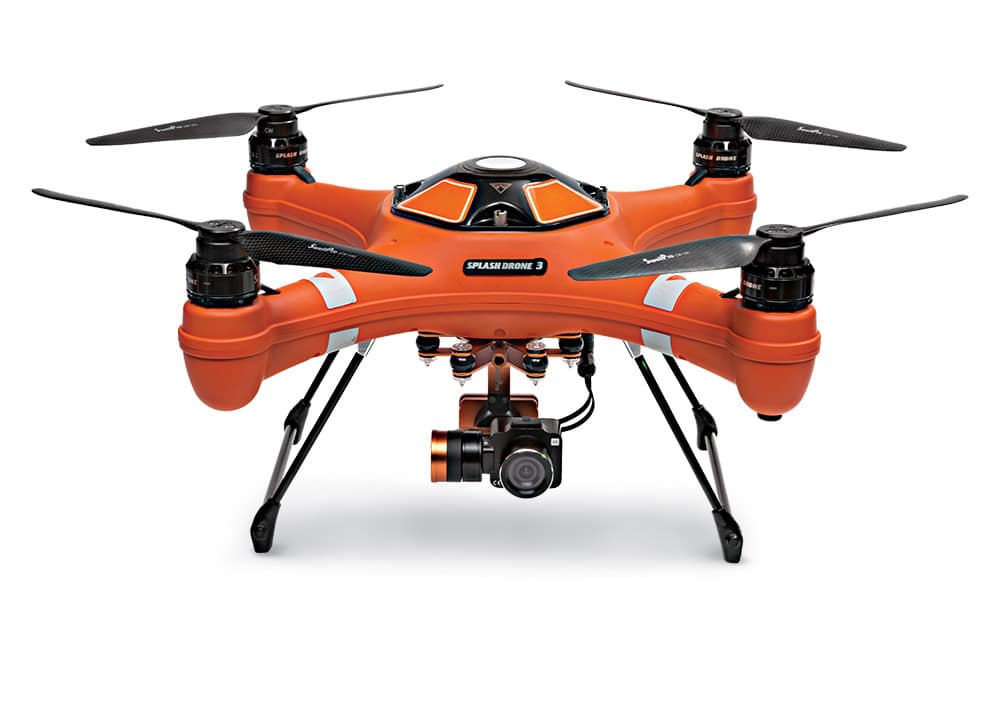
Aerial Recon Drones equipped with stabilized video cameras now offer more vivid images than ever before.
The optional ultra HD 4K waterproof camera for the SplashDrone 3, for example, offers a three-axis gimbal with stabilizing motors to ensure shake-free footage. The optimized field of view provides a more natural-looking perspective than a super-wide fisheye lens. High-quality image sensors capture more detail and true colors on the remote control’s 5-inch screen.
Sending the drone up to 300 feet and then setting it on an auto-circle with a 150-foot radius around the boat helps locate fish-holding flotsam, flocks of feeding birds and, depending on water clarity, schools of fish. Drone scouting works particularly well when fishing clear shallows and flats, allowing you to spot bonefish, redfish, tarpon and other game.
But aerial scouting with a drone is not as simple as you might think, says Capt. Barry Brightenburg, who has experimented with drones while bluewater fishing off Southern California, and has served as a videographer for the television show Inside Sportfishing.
First, you need a good pilot with the skills to fly a drone, and then he must dedicate himself to operating the UAV and focus on the remote display for signs of fish, says Brightenburg. “Having such a dedicated crewmember is a tall order on any boat.”
You also need lots of batteries, Brightenburg says. Most UAVs have flying times of about 15 minutes, though some can fly for as long as 25 minutes. Atmospheric haze also hampers aerial scouting. “It hurts visibility and cuts down on the contrast you need to spot weeds and fish,” Brightenburg says. On days when haze is thick, drones don’t work out.
Brightenburg admits that aerial scouting with a drone is more feasible now than in the early days of UAV development. “With drones that are waterproof and can fly themselves, scouting is a lot easier than it used to be,” he explains. “But it still requires a good pilot and the video feed does not always show the detail you need. Some days, it’s just better to have a guy in the tower with a pair of stabilized binoculars.”
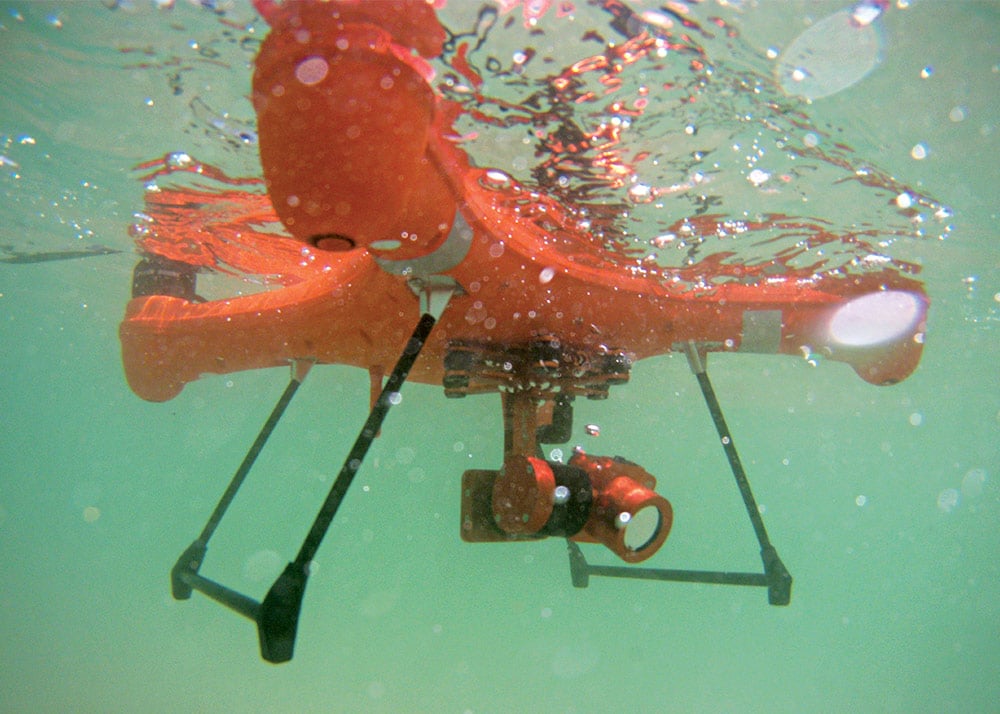
Looking Underwater The SplashDrone 3 Fishing Edition also sees underwater. Say you fly over a shallow reef and want to take a closer look. Sit the UAV down on the water and then use the standard camera with a wide field of view and low-light capability to peer below the surface.
This camera is on a fixed angle, so you cannot pan and tilt as with the optional ultra HD 4K waterproof camera, and it’s for live views only (no video recording). But you can pre-adjust the angle for underwater viewing. In clear water, you can identify species and determine how they are relating to the structure. Once you’re done, it takes off from the surface.
Baiting Fish Capt. Pete Grossbeck, who skippers Controlled Chaos, a 66-foot Viking based in San Diego, has been using drones to target spooky Pacific bluefin tuna for the past three years. He uses the SplashDrone 3, which comes with a payload release. You attach your line and the UAV operator can deliver the bait or lure wherever you want. It can carry up to 2.2 pounds more than three quarters of a mile.
Grossbeck turns to drones when schools of big bluefin are “breezing” near the surface. “These fish are spooky and on the move, and you can’t get close to them, so we use a drone to skip a live mackerel over them, like you would with a kite,” Grossbeck explains.
Wind Worries One of the major impediments to drone usage is wind. UAVs are difficult to control in winds over 10 knots, even in the hands of a skilled pilot. Unfortunately, wind is a fact of life on the water. And so, for now, the best time to use drones — for scouting, baiting fish or videography of angling action — is when the winds are calm.
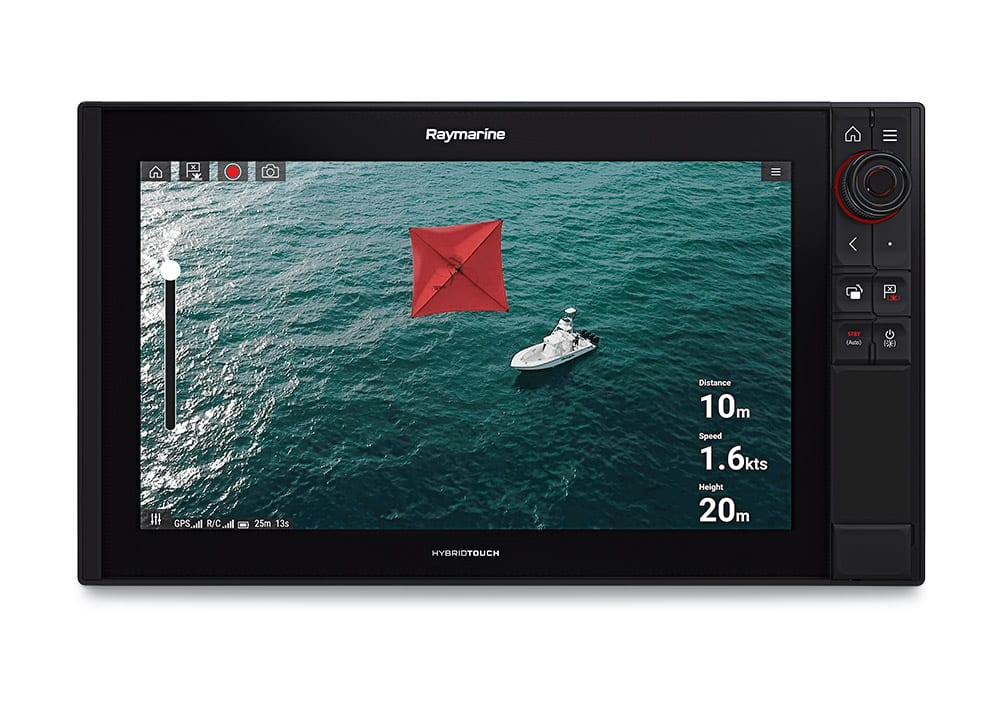
Shooting video of fishing action is a big part of the modern experience and is required in some tournaments. Raymarine Axiom and Axiom Pro MFDs simplify this process, freeing the crew to focus on fish. Raymarine lets you connect a UAV to the MFD, then launch and view images directly from the display, a first in marine electronics. The patent-pending technology is currently compatible with the DJI Mavic Pro ($999) and DJI Mavic Pro Platinum ($1,099) video drones. As soon as you hook a fish, you press the Hook-Up button. The drone instantly launches, acquires and tracks the boat, and starts recording the action. You can also view the action live on the Axiom display to see, for instance, if any mahi are following the one you just hooked. In split-screen mode, the MFD displays the drone location, the direction the camera is pointed, the direction the drone is headed and the course back to the boat. The other side shows a live feed from the UAV’s video camera with data overlays that include the drone’s distance from the boat, and its speed and altitude.
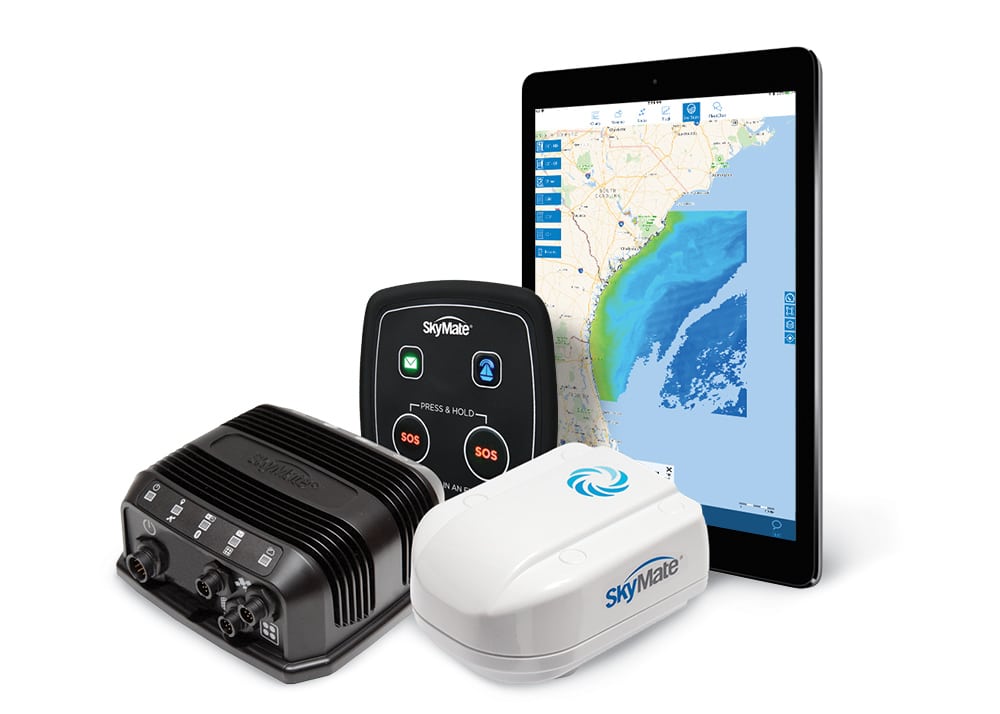
New Electronics
